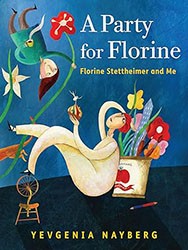Twelve-year-old Miguel Abrano and his family live in late nineteenth-century Tucson, Arizona, descendants of Spanish settlers who had arrived more than three hundred years earlier. Their community is multicultural, an often uneasy mix of English-speaking white residents, Hispanics who had long called the region their home, and the Native Americans who had been oppressed and marginalized by successive conquests. Miguel comfortably switches between speaking Spanish and English, but another transition will be much less comfortable. Although he is a deeply religious Catholic and even aspires to become a priest, Miguel learns that his ancestor, was a converso,a Jew forced to convert to Catholicism by the Spanish monarch and pursued by the Inquisition as a secret Jew. Miguel will be forced to re-examine his previously stable identity and question which relationship, to God or his family, will be central to his future.
The premise of Jacqueline Dembar Greene’s suspenseful novel is the supposedly continuous identification of crypto-Jews living in the American southwest with their distant heritage. Although most credible research has questioned the accuracy of this idea, many American Jews are fascinated by any possible link between Spanish Marranos and living Jewish communities. As Miguel approaches young adulthood, he becomes confused by his father’s apparent ambivalence toward their Catholic faith. A traveling Jewish peddler helps to translate an old document, which has been in the family’s possession since their arrival to the New World, and Miguel learns more than he was prepared to about his true background. When he later meets Rushing Cloud, a Native American boy who has been forcibly educated in a Catholic Mission school, he is sensitized to the cruel treatment by the church of its captive students. They are forced to accept Christianity and European culture at the expense of their own language and traditions, and Miguel’s eyes are opened to the disturbing parallel in his own experience.
There are several historical inaccuracies in this novel, but they may not be errors so much as fictional elements intended to support the book’s message of tolerance and ethnic pride. The Inquisition was a church body, which did not have “soldiers;” they interrogated and tortured suspected heretics, but then turned them over to secular authorities. The Spanish Crown did not conscript Marranosto fight in the Americas. Nor is it likely that sixteenth-century Jews would have drawn parallels between their own punishment by the Catholic Church and that inflicted on Native Americans. Yet there are other truthful and dramatic lessons for young readers in Dembar Greene’s book. Miguel’s conflict with his parents, his disillusion at encountering racism among his neighbors, and his emotional connection with Rushing Cloud as a path towards empathy and self-confidence, all ring true.
The author’s incorporation of differences among Native American tribes also adds nuance, as well as potential controversy, to the narrative. While some readers might question the portrayal of the Indé (Apache) as kidnappers, the practices which she describes have been documented, and the conflict between Indé, Tohono O’odham, and white settlers were painfully true. Different tribes had distinct customs and internal conflicts, all of which were impacted by the theft of their land.
Miguel learns about this reality and the splintering of his own past in this engaging coming-of-age story set in a different, but recognizable, era. Readers will relate to Miguel’s difficult reflection, that “many things in his life now looked different” and “getting back to his family would only be the start of a new journey.”
The book includes an explanatory “Afterword,” “Glossary,” and “Bibliography” all of which will be helpful to readers and educators as they explore a subject often ignored in the history of the era.
Emily Schneider writes about literature, feminism, and culture for Tablet, The Forward, The Horn Book, and other publications, and writes about children’s books on her blog. She has a Ph.D. in Romance Languages and Literatures.




